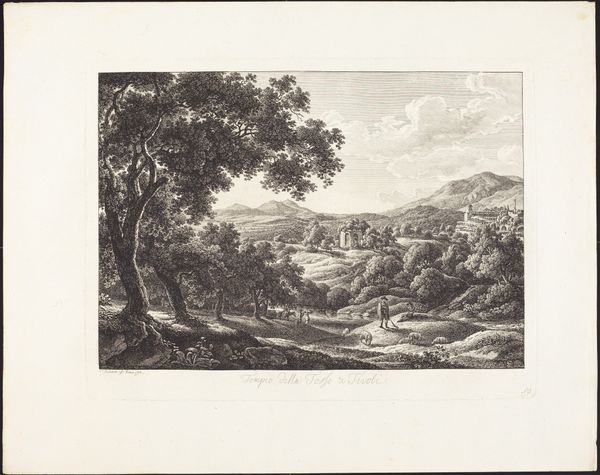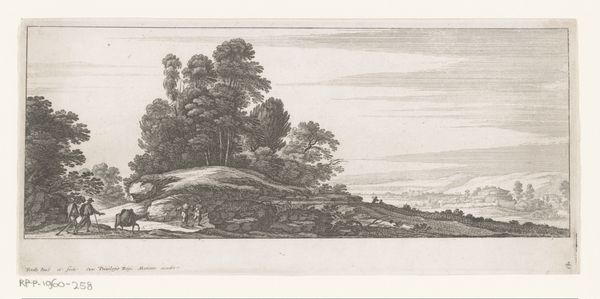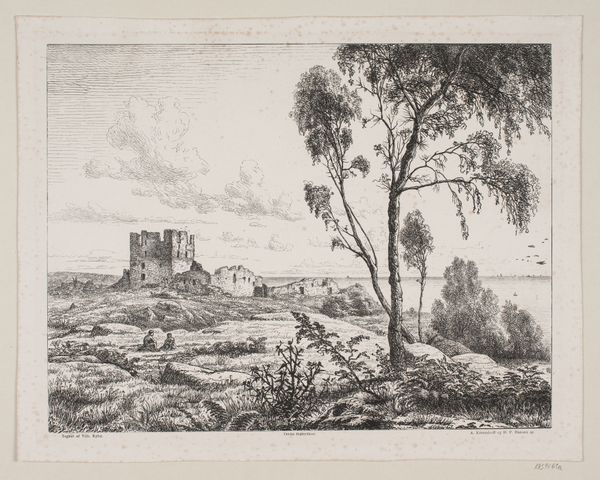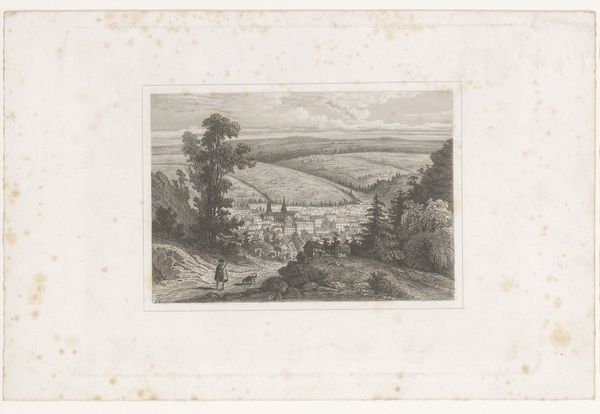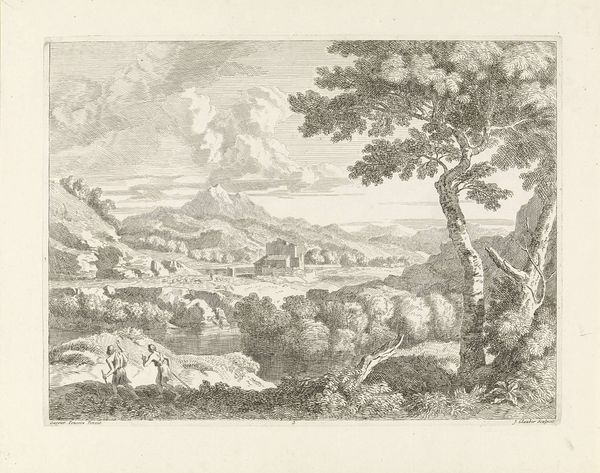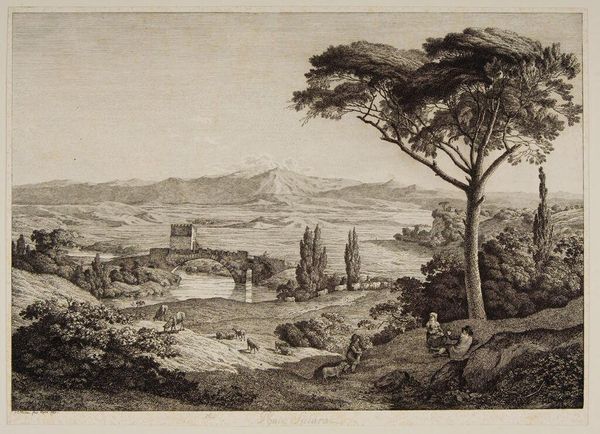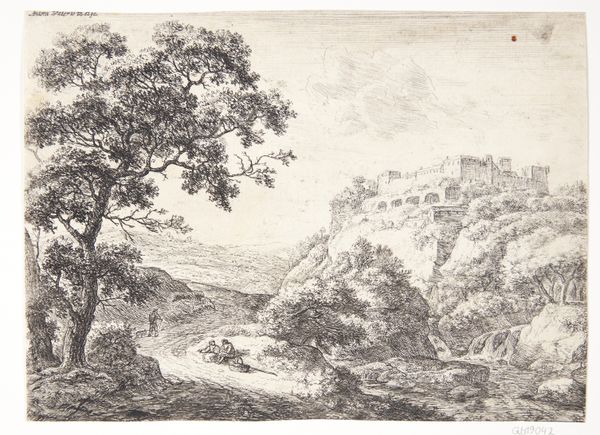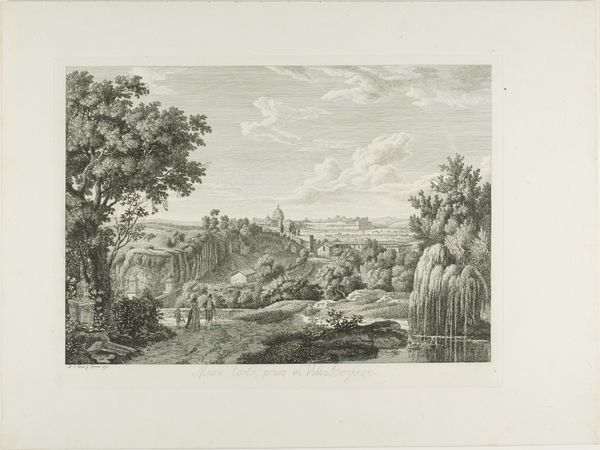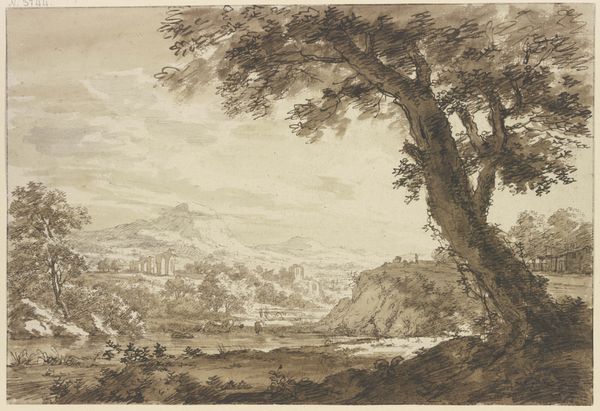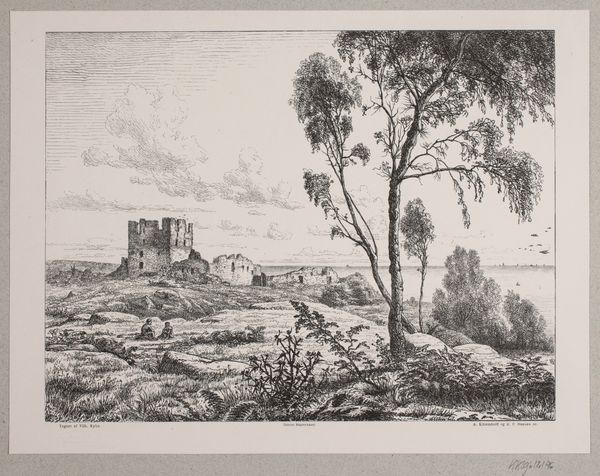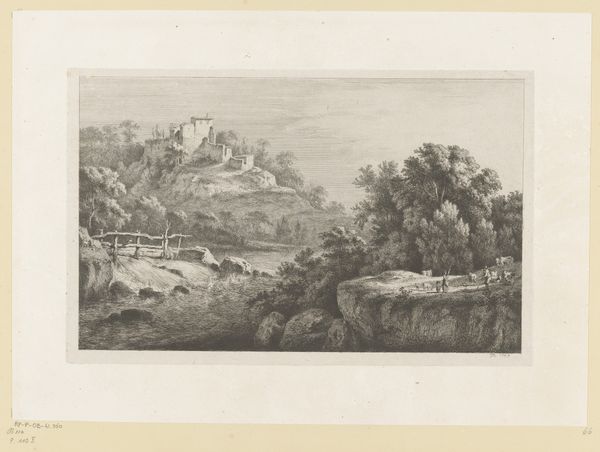
drawing, print, etching, paper, engraving
#
drawing
#
neoclacissism
# print
#
etching
#
landscape
#
paper
#
engraving
Dimensions: 245 × 356 mm (image); 280 × 380 mm (plate); 329 × 452 mm (sheet)
Copyright: Public Domain
Curator: Jacob Wilhelm Mechau's "Bridge of Salaro," created in 1793, presents a captivating landscape now residing here at The Art Institute of Chicago. It employs etching and engraving techniques on paper. Editor: The image evokes a curious tranquility, though slightly muted. The bridge's form is substantial, contrasting against the delicacy of the engraved details throughout. Curator: Indeed. Mechau was working within the Neoclassical movement, so these idyllic scenes also connect to the grand tour tradition popular among elites. Travel was meant to not just be leisure, but an educational opportunity in the landscape, an immersion in culture... but one obviously afforded almost exclusively to a very privileged class. Editor: Thinking of materiality, I wonder about the physical act of creating this image, repeating gestures over and over, almost industrial in some respects. This kind of exacting print work often depended on workshop collaboration to distribute tasks effectively, involving many unseen hands to create supposedly unique landscape prints for affluent consumers. Curator: Absolutely. These images contributed to the development of ideas about nationhood, often presenting an idealized version of its rural elements, masking the economic exploitation that was definitely taking place in these pastoral spaces at the time, not to mention ignoring the realities for those whose land this was before they showed up. Editor: The choice to render the image in shades of gray, of course dictated by its printmaking medium, prompts consideration, too. Color would drastically alter our understanding and its social role. Curator: Agreed. Without that vibrancy, it reinforces a certain austerity and detachment from the depicted labor and class relations in this pastoral idyll. We need to contextualize these pieces as representations of both a specific time and class perspective. Editor: So, while the print itself feels like a quiet snapshot of an ideal place, we've acknowledged that its material reality and historical context are much more active and complex. Curator: Exactly, revealing the quiet hum of ideologies at play in this calm scene.
Comments
No comments
Be the first to comment and join the conversation on the ultimate creative platform.
